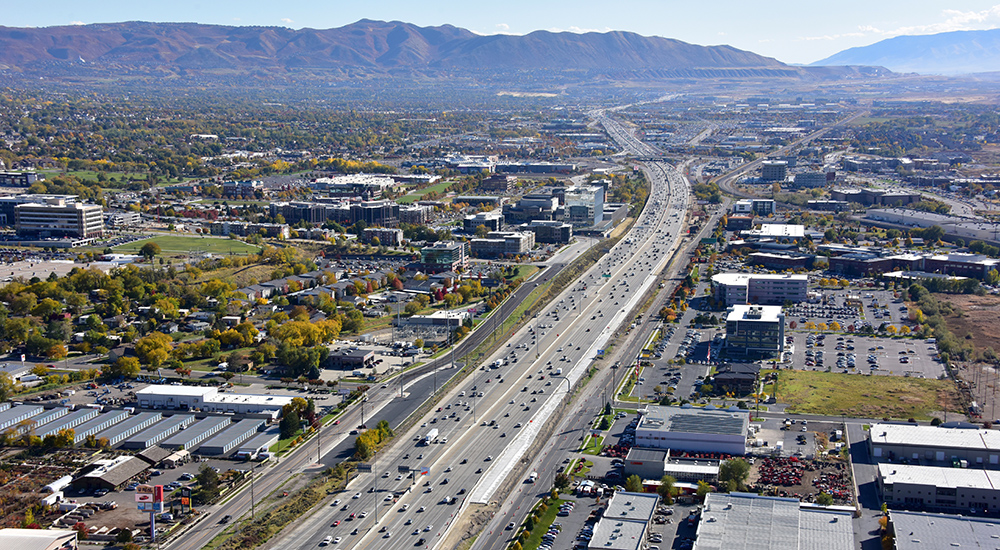Interstate 15 (I-15) is Utah’s primary north–south highway, with most of the state's population living along its corridor. Within Salt Lake City, the state’s most populated city, the roadway suffered numerous slowdowns as the volume of traffic outpaced the existing design’s ability to accommodate it. The regional trucking industry – a major economic engine for Utah, and a vital access point for goods moving across the U.S. and Canada – had begun to suffer delays. Air quality was lowered as vehicles emitted more carbon due to spending more time on the highway.
Michael Baker led design and engineering services to address these challenges. The project added more than 12 miles of southbound lane to I-15, reconfigured the Interstate 215 Belt Route (I-215) interstate to interstate connection and expanded State Route 48 (SR-48) along 7200 South west of the freeway to improve traffic flow, reduce congestion and bring the stretch up to current standards. The team also designed advanced traffic management system updates, drainage extensions and pond modifications, lighting updates and maintenance of traffic. It involved the widening or narrowing of 11 bridges, rehabilitation on another 12 bridges, reconstruction of a Union Pacific Railroad mainline bridge with three tracks and a UTA light rail bridge, adding more than 30 retaining walls and installing 35 sign structures.
Michael Baker maintained the same level of traffic flow for the more-than quarter-million vehicles using the highway each day and maintained rail service by constructing a temporary rail line as work proceeded nearby.
With the addition of the new southbound lane and the modifications at the interchange, travel times for Utah motorists have decreased, reducing travel delays by at least 10 minutes.
